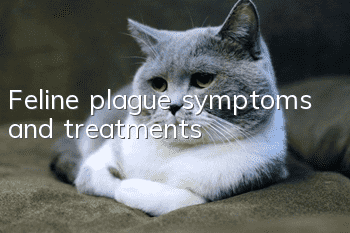Feline plague symptoms and treatments

Although feline plague is not a very common disease now, it is very harmful, so we cannot ignore the impact of the disease and should do a good job in protecting against the disease. If an infected cat is found, it should be isolated and treated as soon as possible.
All cats living in plague areas, as well as cats with symptoms such as chronic respiratory disease and swollen lymph glands, should be considered suspect. Feline sinusitis, rhinitis, sepsis, neoplasia, toxemia, pyometra, and lymphoma are all important conditions in the differential diagnosis of feline plague.
Since confirming the diagnosis will take time, treatment is usually given before the diagnosis is confirmed. Treatment of cats suspected of having feline plague includes flea removal, washing of abscesses, lymph node drainage, and treatment with fungicides for at least 3 weeks. All personnel handling suspected cats should wear gloves, a white coat, and a mask. , cats with symptoms of pneumonia should be handled with more caution.
Since a variety of antibacterial agents are effective against feline plague and drug resistance is becoming more and more common, it is recommended to use enrofloxacin (at least 21 days, 5 mg/kg, orally, once a day). Another antibiotic option is trimethoprim-sulfonamide (21d) or chloramphenicol (21d). Cats exposed to feline plague should be treated with tetracycline as a preventive treatment. Cats with clinical symptoms have a poor prognosis, and more than 50% of cats die acutely.
- What should you pay attention to when your Ragdoll cat arrives at its new home?
- How soon can a cat take a bath after external deworming?
- Can a cat be saved after eating a dead mouse and getting poisoned?
- How long does it take for a cat to receive its first dose of Miao Sanduo?
- How does the pH value of cat urine affect cat health?
- Six things to note when feeding your cat
- How to provide oral care for cats
- Why does a cat keep biting its nails?
- What should you pay attention to when going to someone else’s house to pet a cat?
- Do cats shed hair during the seasons?



